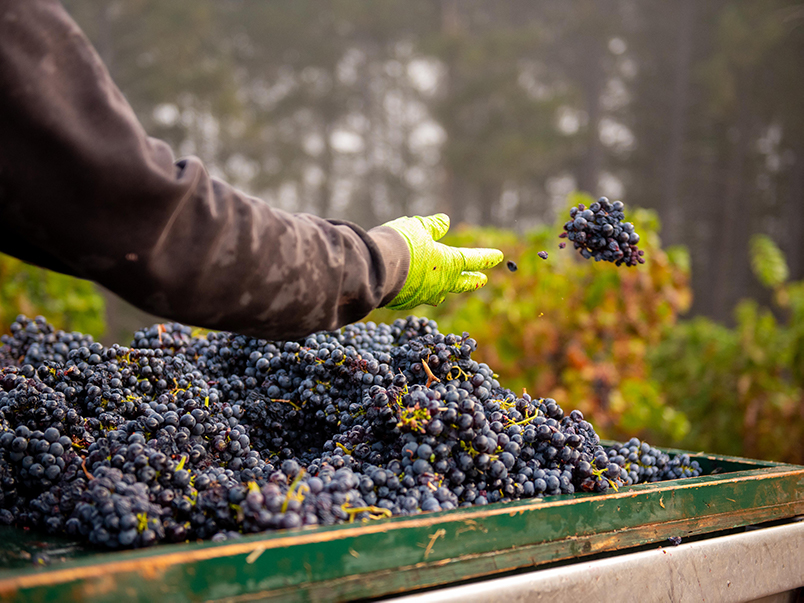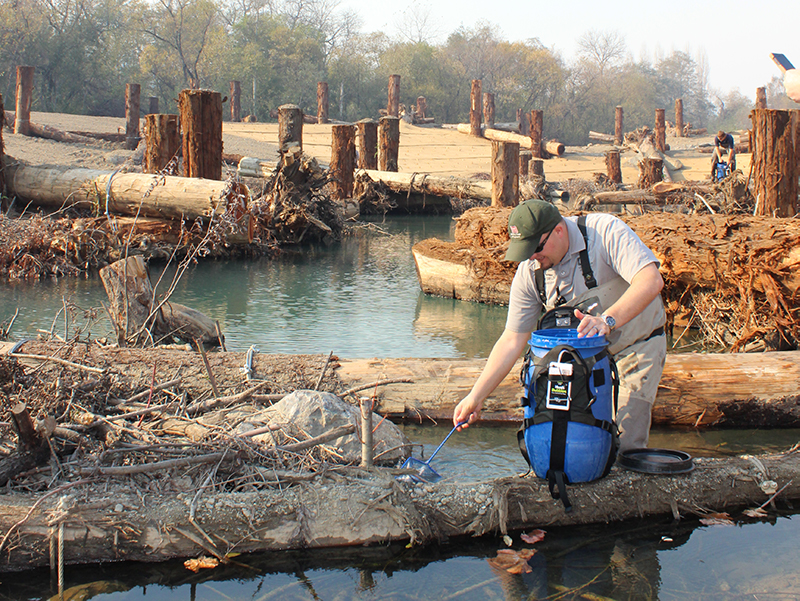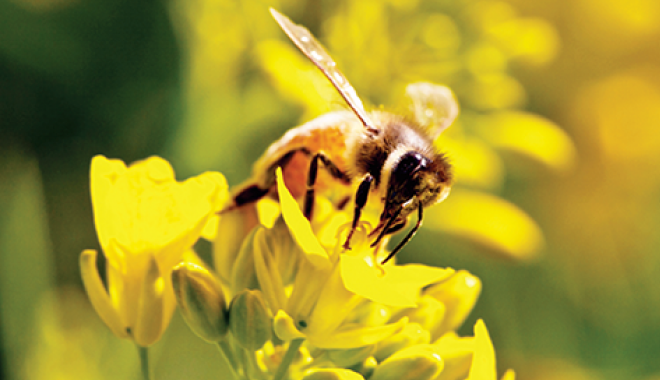Previous slide
Next slide


“Sustainability is not the destination – sustainability is the journey. We are constantly adjusting our business practices as we improve our knowledge of how to better exist within nature.”

A fourth generation descendant of a California farming family, Don Wallace has been the driving force working to implement sustainable farming practices at Dry Creek Vineyard. His efforts and direction have established Dry Creek Vineyard as a leader in the movement in Dry Creek Valley and the industry as a whole.
As a board member of the California Wine Institute, he suggested early on to his fellow board members a new path toward farming – one that was much more in tune with creating a symbiotic relationship in the vineyard. Don argued for the use of fewer pesticides, less spraying and more cover cropping to create a biologically diverse ecosystem. That meant more beneficial pests, construction of owl boxes and raptor perches, and many more earth-friendly farming practices. This launched a new direction for the future that has dramatically impacted not only the winery but the entire way that we farm in Sonoma County.
Using processes, systems and activities to reduce the environmental impact of our facilities, products and operations.
Using resources in an efficient and responsible way to allow us to continue our family ownership and independence.
Protecting and empowering our employees and surrounding community through education and stewardship.

Matching vineyard to varietal is at the heart of our growing philosophy. From vine to bottle, we are driven by the desire to create a healthy and diverse ecosystem for all plants, insects and animal life. This in turn creates a better place for grapes, and at the same time, results in the highest quality wines! Our commitment to sustainable agriculture and minimal off-farm consumption is multifaceted: advancements in viticultural technology go hand-in-hand with respectfully managing our space on this planet. Our ultimate goal is to turn our vineyards over to the third generation in even better condition than they are today!
We are constantly pushing for techniques that will benefit the quality of our wine and the quality of our lives and those of future generations. We start from the ground up, planting our vineyards with variable vine spacing. Using topographic maps and soil quality analysis, we are able to determine which parts of our vineyards have lower soil fertility versus other areas that have higher soil fertility. Instead of planting our vines in the traditional method of evenly spaced rows, we analyze the soil to make sure every vine is planted in the perfect spot to get exactly what it needs. The rows are planted perpendicular to the path of the sun, so that one side receives the morning sun, and the other receives the afternoon sun. Whenever possible, we utilize the existing topography to create a natural pond to collect rain water sheet flow and give the vineyard its own water source. The result is a completely sustainable vineyard – able to maintain and moderate yields on its own – that produces exceptionally flavorful and balanced fruit.
Growing cover crops like clover and bell beans helps rebuild depleted soil by releasing bound nutrients in the soil and minimizing the need to import fertilizer. Mature cover crops are tilled into the earth where they break down to form nourishing organic material. By using special seed blends that flower at different times, we also attract beneficial insects that help us naturally control pest insect populations.
With every fall harvest, we compost our grape skins, seeds and all other organic material to return the nutrients back to the soil they came from. Composting helps us reduce the need for synthetic fertilizers, with the added benefit of improving the quality of our soil, so we can continue to grow delicious, healthy and balanced grapes in our estate vineyards!
Despite their importance to global and local ecosystems, honey bee populations are declining rapidly. Beekeeping at our winery helps support our local population while enhancing the eco-system for our vineyard. For instance, they pollinate our cover crops, which in turn, become healthier and more efficient at returning nutrients to the soil in our vineyards.
Being a part of the community and supporting local family farmers have been major priorities for our winery for five decades. We work closely with our growing partners and our vineyard manager to ensure that every grape we harvest for our wines comes from an earth-friendly environment and is of the highest quality. In building these long-term partnerships, we also reflect our history and ethos as a small but mighty pioneer in the California wine industry.
Water is a precious resource for our drought-prone location in Sonoma County. Use of deficit irrigation has led to the virtual dry farming of some vineyards. Wherever possible, our water systems are designed to capture flood water or runoff instead of using the underground water table. Precise watering also helps optimize fruit quality, so we can make the best tasting wines while being conscious of our water consumption!
The winery provides specialized housing and perches designed to encourage birds of prey to adopt our vineyards as their feeding ground. Redtail hawks and barn owls do a great job of controlling gopher and other rodent populations. This means that we can manage vineyard pests naturally, without the need for chemical deterrents, so there is minimal intervention in the wines we produce.

The winery is an integral partner with the Sonoma County Water Agency in the Dry Creek Habitat Enhancement Project along the Dry Creek. This critical project provides a needed habitat for endangered Coho salmon and Steelhead trout. Improving our fish and creek habitat means we can create an overall healthy ecosystem, where the symbiotic relationships between various species of animals and plants are able to flourish.

We use modern technology to enhance the quality of our wine and to optimize and reduce our use of resources. This includes, but is not limited to, global positioning satellite data paired with soil mapping in order to better establish new plantings of vines. Weather data is also gathered from each vineyard site in order to better manage all farming aspects, reducing the consumption of raw materials such as fuel, water and energy.

Sustainability isn’t just a buzzword for us, it’s our way of life and has been for many decades. Our family winery and all of our estate vineyards are 100% Certified Sustainable, and we continue to break barriers with our commitment to transparent labeling and minimal intervention winemaking. We are actively engaged in energy reduction and waste reduction methods across all departments at the winery. With the addition of our solar panels, we will reduce green house gas emissions by 2,134 tons of CO2 by 2037. This is the equivalent of:
• Small car: 7,232,203 miles
• Medium car: 3,879,091 miles
• SUV: 2,717,834 miles
• Air miles: 4,298,969 miles
• Trees planted: 85,340 trees
• CO2 from trash & waste: 3,879 persons
This effort takes a village and every member of our winery family is committed to ensuring a minimal environmental impact. At the end of the day, we are constantly pushing for improvements and techniques that will benefit the quality of our wines and the quality of life in this place we call home.
Our winery takes an “off-grid” approach with solar panels that help power the daily needs of the winery and reduce our greenhouse gas emissions. It is a viable, adaptable approach in protecting and preserving our environment given the clean, pure energy derived from our location the Dry Creek Valley.
Our insectary garden and self-guided vineyard walk are designed to educate our guests about the benefits of biodiversity in managing vineyards and producing delicious wines. This is a passion of ours, and we are excited to see the symbiotic relationships in Mother Nature flourish in our backyards! We keep beehives onsite to add to a healthy ecosystem, as well as other beneficial plants like olive trees, almond trees, fruit trees and cover crops.
We use high-pressure, low-flow devices for cleaning our tanks and barrels, so we can be as efficient as possible with our water usage. We track water use in production and winemaking carefully in order to improve on our procedures year after year. Similarly, we use modern irrigation controllers that allow input from weather stations, which will automatically reduce or eliminate watering when it’s not required.
Wherever possible, we partner with like-minded local individuals and companies that are focused on improving the sustainability of their business practices. It is incredibly important to us to support both the community and the environment around us. As a Bay Area green-certified company, our family winery will continue to choose to do business with dependable, transparent and eco-friendly partners.

We encourage you to join us for a stroll around this educational and picturesque area right in front of our family winery, overlooking our Four Clones Vineyard. The tour around the Insectary Garden & Vineyard Walk is self-guided in nature and offers plenty of opportunities for photography and enjoying the ambiance of the vineyard. You’ll also be able to see our raptor perches and owl boxes, another element of our sustainable vineyard practices.
The Insectary Garden helps us attract beneficial insects to our property. The plants in the garden are native and provide an environment that is home to natural enemies of crop pests that can inhabit our vineyards. This natural means of controlling harmful pests also assists beneficial insects in pollination and generally creates a balanced growing environment for our grapevines.
Beneficial insects in our Insectary Garden include ladybugs, bees, ground beetles, hoverflies, minute pirate bugs, lacewings and wasps. These ‘good’ insects are as much as ten times more abundant in insectary gardens, naturally shoo-ing away pests like leafhoppers, spider mites, leafrollers and mealybugs that can hurt our vines.
In addition to it being a beautiful focal point for the winery, our goal is to have this insectary further enhance our sustainable farming practices. The garden makes a valuable contribution to creating a balanced ecosystem in the vineyard – which will be a key to success for future generations to come!


The Dry Creek Habitat Enhancement and Demonstration Project supported by the Sonoma County Water Agency and several cooperating landowners, is a decade-long project large in both scope and intention: it aims to improve the habitat of the now endangered Coho salmon and Steelhead trout that call the Dry Creek their home. Proprietor Don Wallace has always had a passion for land preservation and sustainability, and a desire to restore the Dry Creek. As Don said, “Before we began this project, the creek bed was eroded and the flow of water had changed. It wasn’t always like that. This creek used to run dry – hence its name!”
In the 1970s and 80s, Warm Springs Dam, known as Lake Sonoma, was constructed. Its operation began in 1984 to provide flood control in the winter and to store water year-round for municipal and domestic uses. The dam has affected the Dry Creek in many ways, but no other species have been as adversely affected as the Coho salmon and Steelhead trout. Flow rates vary wildly with lower rates in the winter and swifter rates during summer months. The result is a poor habitat quality and a stressful environment for the young Coho and Steelhead when they are in their most vulnerable state. Riffle habitats, important fish production areas, are also rare up and down the creek.
This essential project has involved building more habitats for fish species in the creek behind our family winery. The first stage was completed in 2012 along 1.1 miles in the middle of the valley, extending from the mouth of Grape Creek downstream to the mouth of Crane Creek. Stage 2 behind Kim and Don’s home was finished in the fall of 2013 and included a new estuary for spawning fish along with several riffle areas and bank and erosion control improvements. Stage 3 was most recently completed the summer of 2020 on a neighbor’s property.
Officials from the National Oceanic and Atmospheric Administration (NOAA) and the Sonoma County Water Agency, along with Don and Dry Creek Vineyard, signed the first ever agreement in 2016 assuring continued habitat enhancement and environmental protection of endangered salmon and steelhead along the famed Russian River tributary, Dry Creek. Designed to provide a positive environment for endangered fish species, as well as erosion control, this project is a private/public partnership and has been deemed one of the first of its kind.
The entire restoration project is slated for completion in 2024, which will ultimately result in more than six miles of habitat enhancement. It has been a dream come true to see Dry Creek return to its natural habitat as one of Sonoma County’s prime spawning areas for these endangered fish!
For more information or status updates about this project, please visit scwa.ca.gov/drycreek.

We are driven by the desire to create a healthy and diverse ecosystem for all plants, insects and animal life, which in turn creates a better place for grapes, and at the same time results in the highest quality wines. Our commitment to sustainable agriculture and minimal off-farm consumption is multifaceted. Advancements in viticultural technology go hand-in-hand with respectfully managing our space on this planet. Our ultimate goal is to turn our vineyards over to the third generation in even better condition than they are today. We are constantly pushing for techniques that will benefit the quality of our wine and the quality of our lives and those of future generations.
Growing cover crops like clover and bell beans helps rebuild depleted soil by releasing bound nutrients in the soil and minimizing the need to import fertilizer. Mature cover crops are tilled into the earth where they break down to form nourishing organic material. By using special seed blends that flower at different times, we also attract beneficial insects that help control pest insect populations.
Our composting practice includes all organic material generated from harvest. This reduces the need for synthetic fertilizers as well as improving quality of our soil.
Despite their importance to global and local ecosystems, honey bee populations are declining rapidly. Beekeeping at our winery helps support our local population while enhancing the eco-system for our vineyard.
Lorem ipsum dolor sit amet, consectetur adipiscing elit, sed do eiusmod tempor incididunt ut labore et dolore magna aliqua. Ut enim ad minim veniam, quis nostrud exer citation ullamco laboris nisi ut aliquip ex ea commodo consequat. Duis aute irure dolor in reprehend erit in voluptate velit esse cillum dolore eu fugiat nulla pariatur. Excepteur sint occaecat cupidatat non proident, sunt in culpa qui officia deserunt mollit anim id est laborum.
Use of deficit irrigation has led to the virtual dry farming of some vineyards. Wherever possible our water systems are designed to capture flood water or runoff instead of using the underground water table. Precise watering also helps optimize fruit quality.
The winery provides specialized housing and perches designed to encourage birds of prey to adopt our vineyards as their feeding ground. Redtail hawks and barn owls do a great job of controlling gopher and other rodent populations, without the need for chemical deterrents.

The winery is an integral partner with the Sonoma County Water Agency in the Dry Creek Habitat Enhancement Project along the Dry Creek. This critical project will provide a needed habitat for endangered Coho salmon and Steelhead trout. Improving our fish and creek habitat means we can create an overall healthy ecosystem.

Weather stations, neutron probes and leaf bombs enhance quality, reduce water consumption and maximize other viticultural practices.